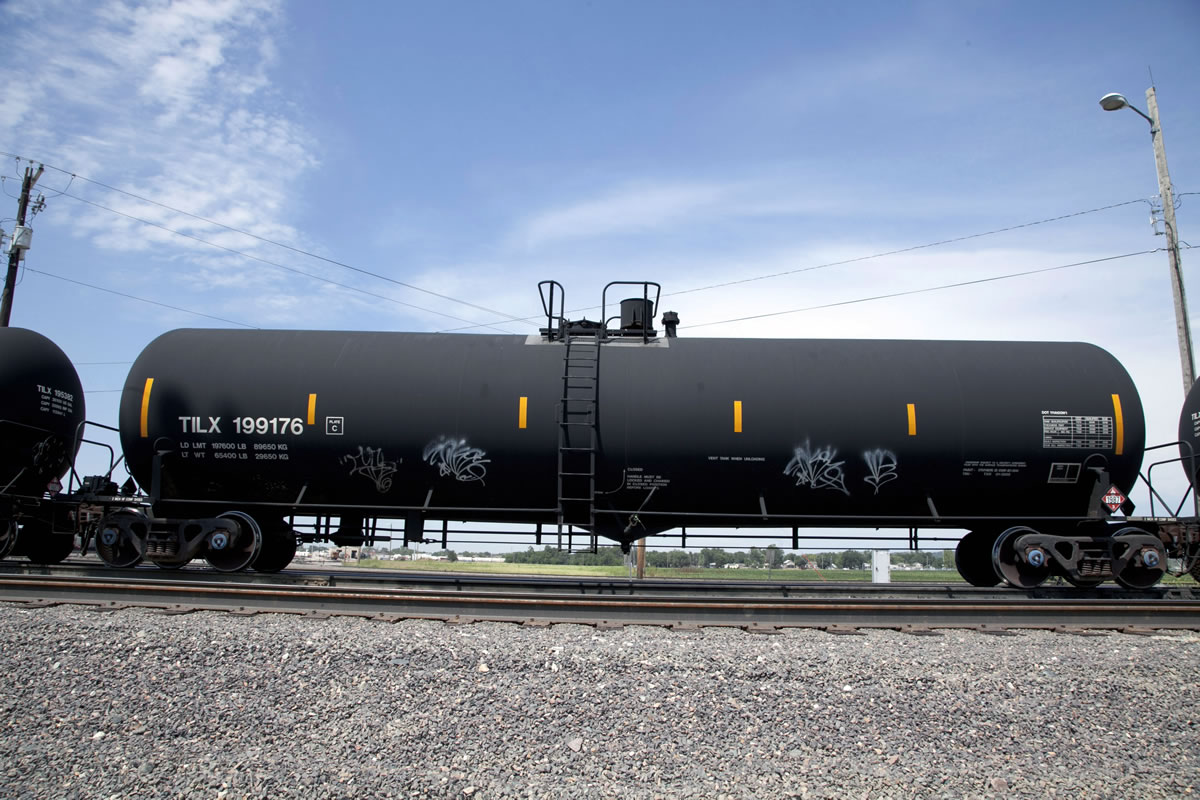WASHINGTON — The chief of a federal agency tasked with improving the safety of crude oil shipments by rail declined Wednesday to give lawmakers a date for new tank car rules that railroads and safety officials have sought for years.
Cynthia Quarterman, administrator of the Pipeline and Hazardous Materials Safety Administration, also testified the tank car fixes weren’t “a silver bullet,” and were only “one piece of the mitigative puzzle” in making crude oil transportation safer.
The rail industry petitioned the agency three years ago for a rule on tank cars, but the process didn’t begin until September and could take at least another year to finish. Lawmakers expressed their frustration at the delay and the uncertainty it creates.
“Set a deadline,” said Rep. Peter DeFazio, D-Ore.
In addition to the safety of crude oil shipments on railroads, the hearing in the House of Representatives subcommittee that oversees railroads also examined recent commuter rail accidents and the problems the industry is facing meeting a December 2015 deadline to install a collision avoidance system.
Federal regulators and industry officials told lawmakers that the railroad industry will not be able to meet the deadline to install the system, called Positive Train Control. Congress required the system in 2008 after 25 people died in a head-on collision between a commuter train and a freight train in Southern California.
Lawmakers mainly focused on a series of derailments of crude oil trains since last summer.
The deaths of 47 people in Quebec last summer amplified years of warnings from the National Transportation Safety Board that general service tank cars were not well-suited to carry flammable materials because of their tendency to puncture in derailments.
Subsequent derailments in Alabama and North Dakota further cast doubt on the cars.
“Quite simply,” testified NTSB member Robert Sumwalt, “their continued use poses an unacceptable public risk.”
The head of the railroad industry’s principal advocacy group told lawmakers that rail companies agreed with the NTSB. The Association of American Railroads didn’t wait for regulators to make a move before requiring higher tank car standards on their own.
“There is some concern and doubt as to whether we can move crude safely,” said Edward Hamberger, the group’s president and CEO. “The answer to that is ‘yes.'”
However, the timing of those improvements coincided with dramatic growth in oil production in North Dakota’s Bakken region.
“Five years ago, no one would have predicted it,” said Jack Gerard, the president and CEO of the American Petroleum Institute.
But the lack of pipeline capacity put much of the crude in trains, largely of the older, less-protected DOT-111A type tank cars.
Hamberger said the industry favored that such “legacy” cars be phased out of crude oil transportation or be retrofitted with better safety protections. New cars, he said, should be built with thicker shells, thermal insulation, stronger housings for valves and outlets, and steel plates at the vulnerable heads — the ends of each car.



